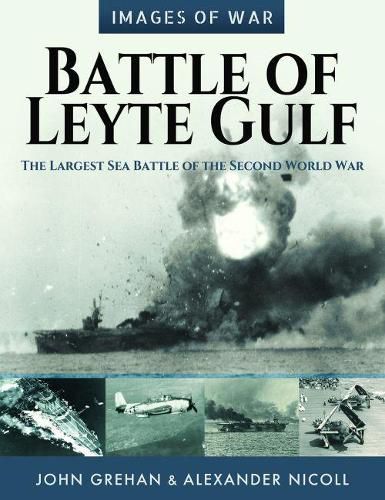Battle of Leyte Gulf: The Largest Sea Battle of the Second World War
John Grehan

Battle of Leyte Gulf: The Largest Sea Battle of the Second World War
John Grehan
By early 1944, offensives undertaken by the United States armed forces had driven the Japanese from many of their conquests in the south and central Pacific. The next American move was to sever Tokyo’s communications with the remaining Japanese garrisons and interdict the supplies of raw materials essential to Japan’s war effort. Before this could be achieved it was considered essential to eliminate the land-based air forces in the Philippines which were regarded as too powerful to by-pass. The American plan was to land on the eastern Philippine island of Leyte and, once fully established there, to move against the island of Mindoro. At this point, US forces would then launch their main assault upon Luzon and the Philippine capital, Manila. On 20 October 1944, the US Sixth Army began landing on Leyte’s eastern coast, supported by the US Navy’s 3rd and 7th fleets, which were assisted by ships from the Royal Australian Navy. The Japanese were aware that the Americans were poised to attack the Philippines and planned to draw the American warships into one last great battle to try and stave off the otherwise inevitable defeat. Over the course of the following three days, the two naval forces engaged in four separate engagements. Involving more than 360 ships and 200,000 naval personnel, the battle was the greatest naval encounter of the Second World War and possibly the largest naval battle in history. The result was disastrous for the Japanese who lost three battleships, four aircraft carriers, ten cruisers and eleven destroyers, along with almost 300 aircraft - the greatest loss of ships and crew the Japanese had ever experienced. In Battle of Leyte Gulf, the actions of the warships as well as the accompanying amphibious landings on Leyte by the US Sixth Army are vividly revealed through a dramatic collection of photographs depicting the ships, sailors, airmen and soldiers who made history. AUTHORS: John Grehan has written, edited or contributed to more than 300 books and magazine articles covering a wide span of military history from the Iron Age to the recent conflict in Afghanistan. John has also appeared on local and national radio and television to advise on military history topics. He was employed as the Assistant Editor of Britain at War Magazine from its inception until 2014. John now devotes his time to writing and editing books. Alexander Nicoll has been involved in writing and publishing military history for thirty years. He began his career with local history, and has since written numerous books and magazine articles, predominantly on subjects relating to the two world wars.
160 b/w illustrations
This item is not currently in-stock. It can be ordered online and is expected to ship in approx 2 weeks
Our stock data is updated periodically, and availability may change throughout the day for in-demand items. Please call the relevant shop for the most current stock information. Prices are subject to change without notice.
Sign in or become a Readings Member to add this title to a wishlist.


